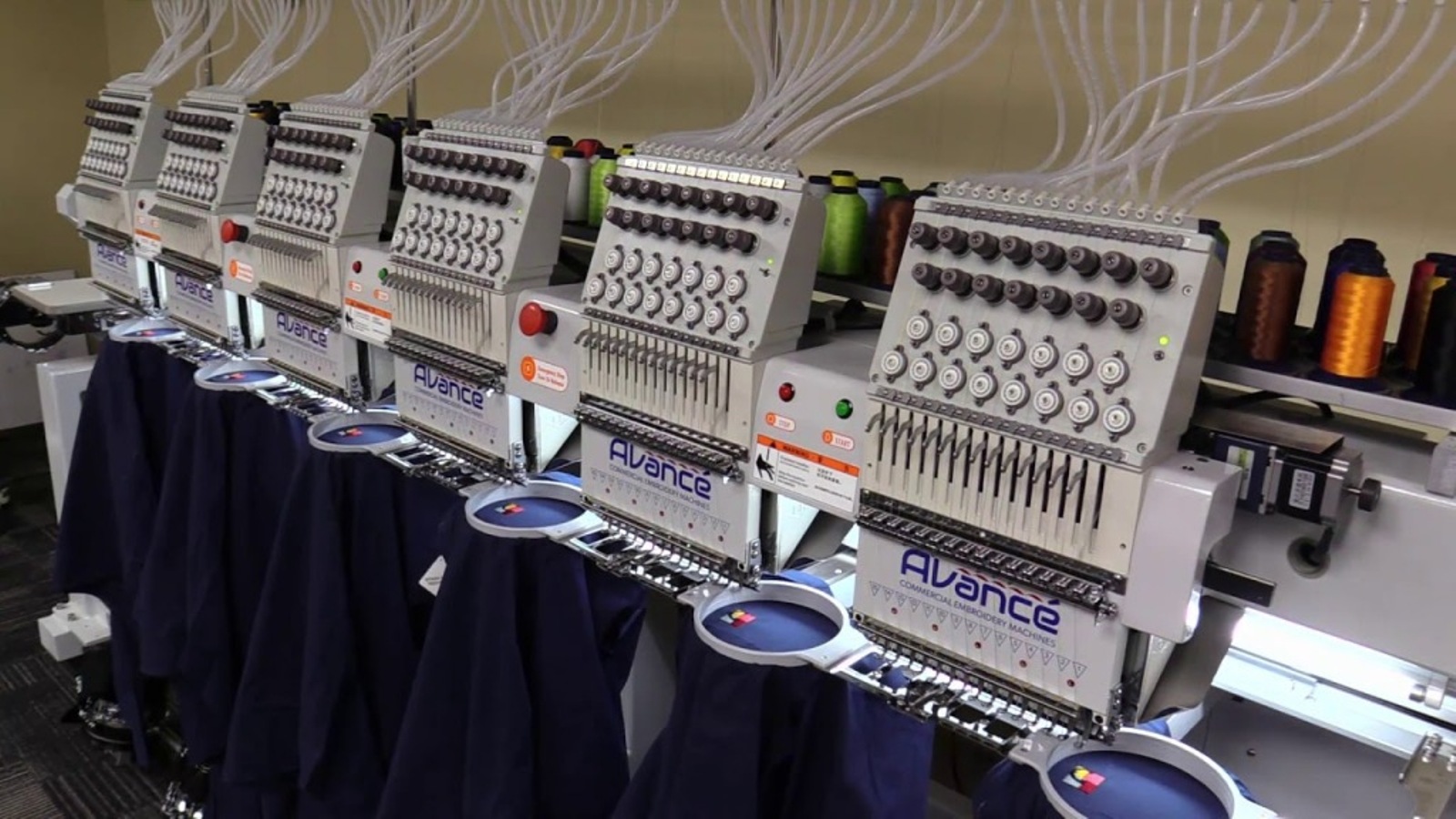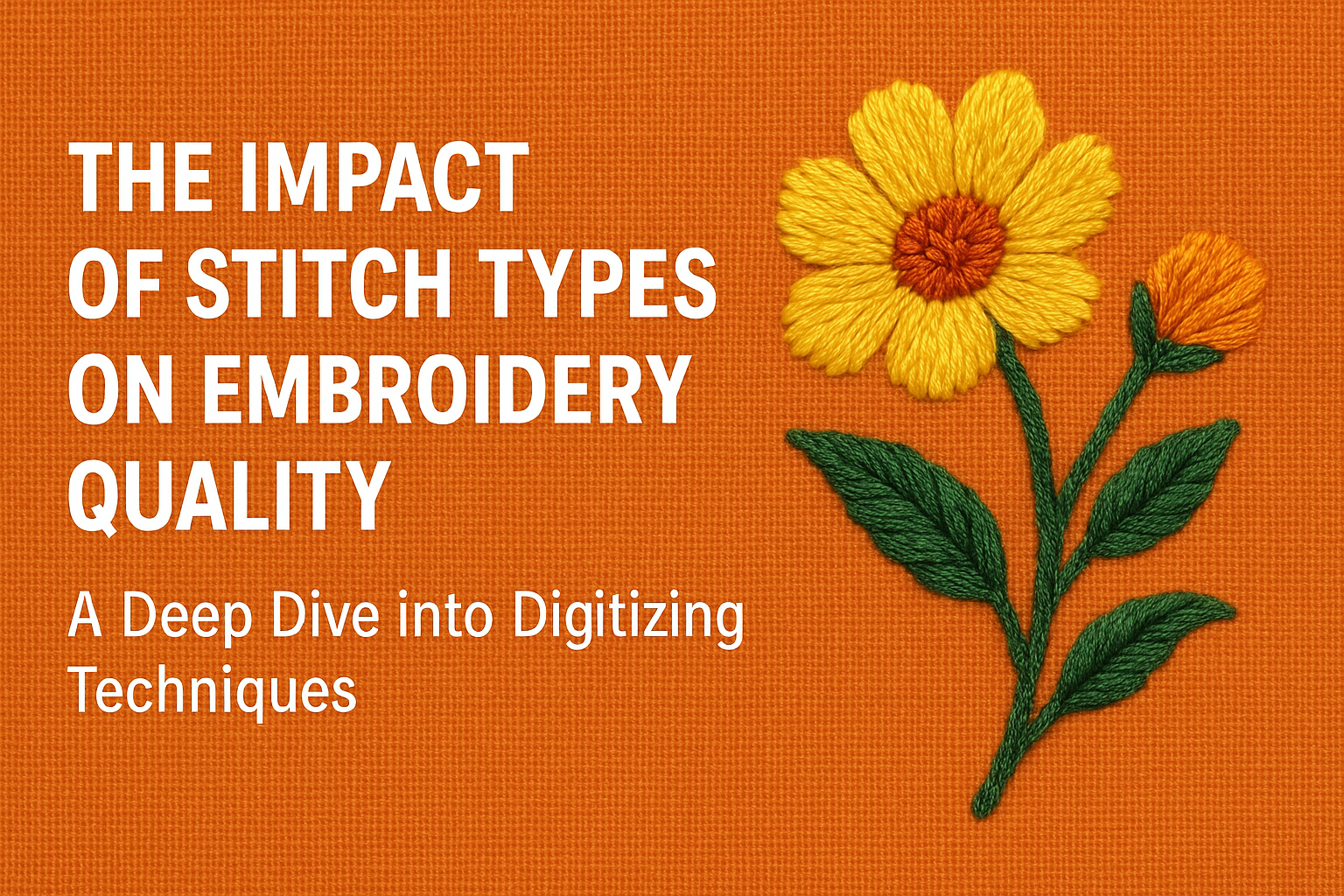Embroidery digitizing is the cornerstone of modern machine embroidery. Whether you’re a fashion designer, an apparel brand, a custom merch seller, or a creative hobbyist, understanding the digitizing process is essential to bringing your embroidered ideas to life. In this comprehensive guide, we’ll cover everything you need to know about embroidery digitizing—from its fundamentals to advanced techniques, software, industry trends, and practical tips.
1. What is Embroidery Digitizing?
Embroidery digitizing is the process of converting artwork or images into a digital file that an embroidery machine can read and stitch onto fabric. This digital file contains instructions that tell the machine where, how, and in what order to place each stitch.
It’s important to note that digitizing is not an automatic process. While there is software available to assist, the best results come from manual digitizing by professionals who understand both art and the mechanics of embroidery.
Need a design digitized for embroidery? Explore our professional digitizing services today!
2. Why is Digitizing So Important in Embroidery?
Digitizing is what determines how an embroidery design will appear when stitched. A poorly digitized file can result in:
- Misaligned stitches
- Gaps or puckering
- Inconsistent thread density
- Broken needles or thread
On the other hand, a well-digitized design ensures that your embroidery looks crisp, professional, and durable. That’s why it’s crucial to either learn digitizing or work with experienced digitizers.
Learn how quality digitizing can transform your embroidery results. Visit our digitizing page.
3. Key Components of a Digitized Design
Here are the core elements that make up a digitized embroidery file:
- Stitch Types: Fill stitches, satin stitches, and run stitches each have different visual and structural characteristics.
- Pathing: The order in which the design is stitched to minimize jumps and trims.
- Density: Controls how many stitches are used per area. Too dense can damage fabric; too light can result in visibility gaps.
- Underlay Stitches: These foundational stitches support the top stitches and stabilize the fabric.
- Pull Compensation: Adjusts stitch width to account for thread pulling and fabric distortion.
4. Common Digitizing File Formats
Depending on the embroidery machine brand, you’ll need specific file formats:
- .DST – Tajima
- .PES – Brother / Babylock
- .EXP – Melco
- .JEF – Janome
- .XXX – Singer
Always ask your embroidery shop what file format they require before submitting a digitized design.
5. Embroidery Digitizing Software
Digitizing is done using specialized software. Popular programs include:
- Wilcom Hatch – User-friendly and professional-grade
- Embird – Modular software for digitizing and editing
- Brother PE-Design – For Brother machines
- TruEmbroidery – For Mac users
- SewArt – Affordable entry-level software
These tools allow you to manually or semi-automatically digitize designs with control over every stitch.
Want top-notch quality digitizing without learning the software? Let our experts handle it.
6. Manual vs Auto Digitizing
Many software options offer auto-digitizing where you upload an image and the software attempts to convert it to stitches. While convenient, it’s not ideal for most professional applications.
Manual digitizing, on the other hand, involves placing every stitch by hand, offering greater control and better results. Experienced digitizers understand how fabric behaves, how thread lays, and how to optimize stitch types.
7. Challenges in Embroidery Digitizing
Digitizing is both a technical and creative process. Here are some common challenges:
- Fabric type: Stretchy or thin fabrics require different digitizing approaches than thick or stable ones.
- Design complexity: Very detailed logos or gradients may need to be simplified.
- Thread limits: Most machines support only a limited number of thread colors.
- Registration issues: If pathing is incorrect, design elements can shift during stitching.
8. Tips for High-Quality Digitizing
- Start with high-resolution artwork.
- Simplify small text and overly detailed logos.
- Choose the right stitch type for each part of the design.
- Use underlay stitching appropriately.
- Test and tweak—run samples to spot errors and refine.
Our custom digitizing process ensures accuracy, clarity, and smooth stitching. Start your project now.
9. Industries That Rely on Digitizing
Embroidery digitizing isn’t just for clothing—it powers entire industries:
- Fashion – Custom embroidery for garments and accessories
- Promotional Products – Company logos on hats, bags, and uniforms
- Sportswear – Team names and mascots on jerseys
- Interior Décor – Monogrammed linens, curtains, and cushions
- Personal Gifts – Baby items, wedding embroidery, and custom art
10. Outsourcing vs DIY Digitizing
If you’re starting out, consider outsourcing your digitizing to save time and avoid mistakes. Look for digitizers who:
- Understand your fabric and machine type
- Have a solid portfolio
- Offer editing and revision support
- Provide quick turnaround
When you’re ready, learning to digitize in-house gives you more control and flexibility.
Need a reliable digitizing partner? Discover how we can help.
11. The Future of Embroidery Digitizing
As technology advances, digitizing is becoming more precise and accessible:
- AI-assisted digitizing tools are improving auto-digitizing quality.
- Cloud-based platforms allow collaboration between digitizers and embroiderers.
- 3D embroidery and puff effects are pushing creative boundaries.
- Sustainable practices are reducing waste by optimizing stitch paths.
Still, the human touch remains irreplaceable—manual digitizing by skilled professionals continues to set the gold standard.
12. Conclusion
Embroidery digitizing is more than just a technical process—it’s a creative discipline that blends technology, design, and textile knowledge. Whether you’re aiming to build a business or explore a new hobby, mastering digitizing opens up limitless possibilities in custom apparel, fashion, branding, and home décor.
If you’re ready to get started or need professional help with embroidery digitizing, explore our digitizing services at Infuse Digitals. Our expert team is ready to bring your artwork to life with precision and quality.
With the right tools, techniques, and practice, you can create stunning embroidered designs that not only look professional but also stand the test of time.
Need help with a specific embroidery project? Contact us for a free consultation.




